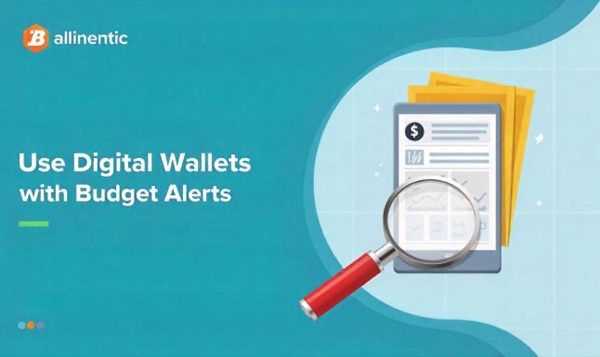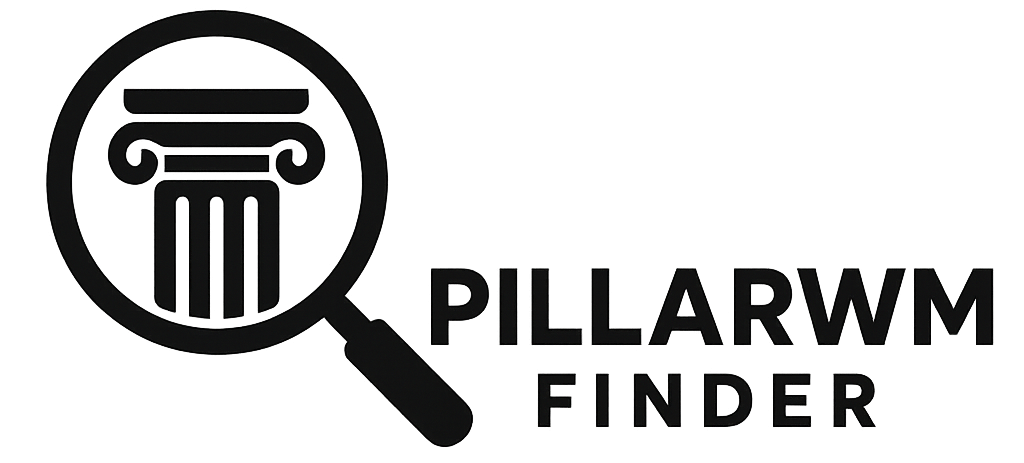100 Proven Ways to Save Money
- Home
- 100 Proven Ways to Save Money
Table of Contents
Saving money doesn’t have to be complicated. In fact, with a few simple tweaks to your daily habits, you can start seeing some real changes in your finances. This article lays out 100 practical ways to save money, covering everything from tracking your expenses to smart credit card use. Whether you’re just starting out or looking to refine your approach, these tips can help you keep more cash in your pocket.
Key Takeaways
- Keeping track of every dollar you spend can help you identify where you can cut back.
- Setting up automatic transfers to your savings can make saving money feel effortless.
- Using cash instead of cards for small purchases can help you stick to your budget.
- Reviewing your bills regularly can uncover potential savings and avoid late fees.
- Paying off high-interest debt should be a priority to save money in the long run.
Personal Finance Hacks

1. Track every expense
Seriously, every expense. It sounds tedious, but knowing where your money actually goes is the first step to controlling it. I use a simple spreadsheet, but there are tons of apps out there that can automate this. You might be surprised at how much you’re spending on things you don’t even realize. This is the first step to creating a monthly budget.
2. Long-Term & Lifestyle Mindset
Think about your money in terms of your long-term goals, not just immediate gratification. That fancy coffee every day? It might seem small, but it adds up. Consider how those small expenses impact your ability to achieve bigger goals, like buying a house or retiring early. It’s about aligning your spending with your values and aspirations.
3. Set up automatic savings transfers
“Pay yourself first” is a classic piece of advice for a reason. Set up an automatic transfer from your checking account to your savings account every payday. Even a small amount can make a big difference over time. Treat it like a bill you have to pay, and you’ll be surprised how quickly your savings grow.
4. Follow the 50/30/20 rule
This is a simple budgeting framework: 50% of your income goes to needs, 30% to wants, and 20% to savings and debt repayment. It’s a good starting point for figuring out how to allocate your money. Of course, you can adjust the percentages to fit your own situation, but the basic idea is to prioritize needs and savings.
5. Use cash for discretionary spending
This is an oldie but a goodie. Using cash for things like eating out, entertainment, and hobbies can help you stick to your budget. When you physically see the money leaving your hand, you’re more likely to think twice about whether you really need that thing. It’s a great way to use cash only and curb impulse spending.

6. Open a high-yield savings account
Don’t let your money sit in a regular savings account earning next to nothing. Shop around for a high-yield savings account. The interest rates are significantly higher, which means your money will grow faster. It’s basically free money!
7. Review credit card statements monthly
Don’t just pay your credit card bill without looking at the statement. Review it carefully to make sure there are no unauthorized charges or errors. It’s also a good way to track your spending and identify areas where you can cut back.
8. Pay bills on time to avoid late fees
Late fees are a total waste of money. Set up reminders or automatic payments to make sure you pay your bills on time, every time. It’s a simple way to save money and avoid unnecessary stress.
9. Use credit card rewards smartly
If you’re going to use credit cards, take advantage of the rewards programs. But be careful not to overspend just to earn rewards. Choose a card that offers rewards that align with your spending habits, and always pay your balance in full each month to avoid interest charges.
10. Create a “no-spend” challenge
Pick a day, a week, or even a month where you don’t spend any money on non-essential items. This can be a great way to reset your spending habits and save some money. It forces you to get creative and find free ways to entertain yourself.

11. Pay off high-interest debt
High-interest debt, like credit card debt, can be a huge drain on your finances. Prioritize paying it off as quickly as possible. Use the debt snowball or debt avalanche method to stay motivated and track your progress.
12. Use balance transfer cards (wisely)
If you have high-interest credit card debt, consider transferring it to a balance transfer card with a 0% introductory APR. But be careful! Make sure you have a plan to pay off the balance before the introductory period ends, or you’ll be stuck with even more interest.
13. Avoid ATM fees
ATM fees are another unnecessary expense. Plan ahead and withdraw cash from your bank’s ATM or get cash back when you make a purchase at a store. Those few dollars here and there add up over time.
14. Reevaluate your bank accounts
Are you paying unnecessary fees for your bank accounts? Shop around for a bank that offers free checking and savings accounts with no minimum balance requirements. There are plenty of options out there.
15. Ask for bill payment extensions if needed
If you’re struggling to pay a bill on time, don’t be afraid to ask for an extension. Many companies are willing to work with you, especially if you have a good payment history. It’s better to ask for help than to incur late fees or damage your credit score.

Long-Term & Lifestyle Mindset
Build Wealth by Changing How You Think About Money
16. Automate Your Investing
The easiest way to grow your wealth? Take the decision-making out of it. Set up automatic transfers to your retirement accounts or brokerage platforms. This “set it and forget it” strategy keeps your investments growing without you even thinking about it.
17. Start a 30-Day Financial Habit Challenge
Focus on one small but impactful habit—like tracking expenses, avoiding takeout, or reviewing subscriptions—for 30 days straight. You’ll build momentum, shift your behavior, and likely stick with the habit long after the challenge ends.
18. Reevaluate Your Goals Every 6 Months
Your financial life isn’t static, so your goals shouldn’t be either. Twice a year, sit down and revisit your savings targets, debt payoff plans, and retirement projections. Adjust accordingly to keep your financial roadmap current.
19. Read Personal Finance Books
Whether it’s The Millionaire Next Door, Rich Dad Poor Dad, or Your Money or Your Life, reading tried-and-true personal finance books helps shift your mindset from consumer to wealth-builder. Knowledge is compound interest for the brain.
20. Follow Frugal Influencers & Blogs
There’s a huge online community of smart, frugal thinkers. Follow them for creative ways to save, free tools, and daily motivation. You don’t have to reinvent the wheel—just see what’s working for others and adapt it to your lifestyle.
![]()
21. Use Visual Savings Trackers
Print out a savings thermometer, use a whiteboard, or go digital. Visually tracking your progress—whether saving for a vacation or emergency fund—makes your goals tangible and rewarding.
22. Set Up Sinking Funds
A sinking fund is a dedicated savings bucket for irregular or future expenses. Think: holiday gifts, car repairs, annual insurance. Setting aside small amounts monthly means you’re never caught off guard when the bills hit.
23. Celebrate Savings Milestones
Saving money shouldn’t feel like deprivation—it should feel like progress. Whether you hit your first $1,000 saved or finally paid off a credit card, celebrate the win. Reward yourself in small, intentional ways to stay motivated.
24. Teach Your Kids About Money
Financial literacy should start early. Use everyday moments—like grocery shopping or budgeting for an allowance—to teach your children about needs vs. wants, saving, and the value of work.
25. Remember: Saving Is a Mindset, Not a Sacrifice
Ultimately, money-saving is about intentionality, not restriction. You’re not giving up pleasure—you’re choosing long-term peace and freedom over short-term impulses. Shift your mindset, and the savings will follow.
Home & Utilities
Slash Monthly Bills Without Sacrificing Comfort

26. Install a Programmable Thermostat
Automated thermostats help you regulate temperature when you’re not home—saving on both heating and cooling costs effortlessly.
27. Switch to Energy-Efficient Appliances
Upgrading to ENERGY STAR-rated appliances can cut your energy bills significantly over time. Look for deals or rebates from your utility provider too.
28. Unplug Electronics When Not in Use
Even when turned off, many electronics draw power. Use power strips and unplug when devices aren’t in use to eliminate phantom energy drain.
29. Use Smart Power Strips
Smart strips detect when a device is in standby mode and shut off power automatically. It’s a smarter way to save without changing habits.
30. Compare Home Insurance Quotes Annually
Loyalty doesn’t always pay. Shopping around each year can often save you hundreds on your homeowner’s or renter’s insurance.

31. Cut Cable—Switch to Streaming
Ditching cable for platforms like Netflix, YouTube TV, or Hulu can save you over $1,000 a year. Choose your services wisely to avoid “subscription creep.”
32. Bundle Internet & Phone
Bundling can offer discounts, and negotiating with your provider for a better rate often works—especially if you’re willing to switch.
33. Use LED Light Bulbs
LEDs use about 75% less energy and last much longer than traditional bulbs. Replacing your most-used fixtures first yields immediate returns.
34. Seal Air Leaks in Windows and Doors
Drafts waste money. Simple weather stripping and caulking can dramatically reduce heating and cooling loss, especially in older homes.
35. Wash Clothes in Cold Water
Most detergents work just as well in cold water—and heating water is one of the biggest energy expenses in laundry.
36. Air-Dry Clothes
Dryers are energy hogs. Hang clothes to dry whenever possible and you’ll extend the life of your clothing too.
37. Lower Your Water Heater Temperature
Setting your water heater to 120°F instead of 140°F reduces energy use without sacrificing comfort.
38. Install Low-Flow Showerheads
These reduce water use while maintaining good pressure—saving both water and the energy needed to heat it.
39. Cancel Unused Subscriptions
Use apps like Rocket Money or Truebill to find and cancel hidden subscriptions quietly draining your funds.
40. Negotiate Utility Bills or Phone Plans
Call your provider and ask for any available discounts, promotions, or assistance programs. It never hurts to ask—and it often works.

Grocery & Food
Eat Well Without Breaking the Bank
41. Meal Plan Weekly
Creating a weekly meal plan reduces impulse buys and helps you use up what’s already in your pantry or fridge. It also keeps your nutrition in check.
42. Make a Shopping List (and Stick to It)
Lists keep you focused and prevent you from tossing unnecessary items into the cart. Bonus: it helps avoid going over budget.
43. Shop Generic Brands
Generic and store-brand products often match name-brand quality but cost significantly less—especially for pantry staples.
44. Use Cashback Grocery Apps
Apps like Ibotta, Fetch, and Checkout 51 offer cashback for everyday items. Scan receipts and rack up savings over time.
45. Buy in Bulk (When It Makes Sense)
Buying non-perishables or frequently used items in bulk saves money—but only if you’ll actually use them before they expire.

46. Cook at Home More Often
Dining out regularly can destroy your budget. Cooking at home gives you full control over ingredients, portion sizes, and cost.
47. Batch Cook & Freeze Meals
Cook large portions and freeze extras for busy nights. This cuts down on food waste, saves time, and helps resist the takeout temptation.
48. Limit Takeout to Once a Week
Set a takeout limit or budget and stick to it. Make it a treat rather than a default choice when you’re tired or busy.
49. Grow Your Own Herbs
Basil, cilantro, mint—store-bought herbs are expensive and often go bad quickly. Growing your own costs pennies and adds fresh flavor to meals.
50. Avoid Shopping When Hungry
Hunger leads to impulse buys and snack-heavy carts. Eat before shopping so you make logical, not emotional, food choices.

51. Use Store Loyalty Programs
Many stores offer digital coupons, cash back, or point systems for loyal shoppers. Make sure you’re signed up and using the app.
52. Use Coupons Strategically
Only clip coupons for items you’d buy anyway. Pair them with store sales for double savings, but avoid buying something just because it’s on sale.
53. Freeze Leftovers
Don’t let food go to waste. Freeze individual portions of leftovers for easy meals on busy days, reducing your reliance on takeout.
54. Skip Bottled Water
Buy a reusable water bottle and use filtered tap water. Bottled water is a recurring cost that adds up quickly for little added value.
55. Compare Unit Prices, Not Total Prices
Larger packages aren’t always the better deal. Look at the cost per ounce or liter to find the best value for your money.
Transportation
Cut Down on Driving Costs Without Giving Up Convenience

56. Carpool or Use Public Transit
Sharing rides with coworkers or taking the bus/train can slash your monthly fuel and maintenance costs—plus it’s eco-friendly.
57. Walk or Bike Short Distances
Skip the car for short errands or trips. Not only does it save gas, but it also improves your health and reduces wear on your vehicle.
58. Shop for Auto Insurance Every Year
Rates fluctuate—and loyalty doesn’t guarantee savings. Compare quotes from different providers annually for the best deal.
59. Keep Tires Properly Inflated
Under-inflated tires reduce gas mileage. Check your pressure monthly for better fuel efficiency and longer-lasting tires.
60. Do Basic Car Maintenance Yourself
Learn to change your own oil, air filter, or wiper blades. You’ll avoid labor charges and gain a valuable life skill.

61. Use Gas Price Comparison Apps
Apps like GasBuddy help you find the cheapest gas nearby. Over time, a few cents per gallon adds up to real savings.
62. Downsize Your Car
If your vehicle is more than you need (or a gas guzzler), consider trading it in for something more economical and fuel-efficient.
63. Refinance Your Auto Loan
Better credit score now than when you bought your car? You may qualify for a lower interest rate and reduce your monthly payment.
64. Avoid Speeding Tickets (Drive Smart)
Speeding burns more fuel and risks expensive tickets. Drive the limit—not just for safety, but for your wallet too.
65. Sell or Donate Your Second Car
If your family has multiple cars that aren’t fully used, consider downsizing. You’ll save on insurance, registration, maintenance, and gas.
Shopping & Lifestyle
Shop Smart, Save Big—Without Feeling Deprived

66. Wait 24 Hours Before Big Purchases
Impulse buying can wreck your budget. Pause for at least 24 hours before buying anything over a set amount (e.g., $100). Most urges fade once the emotion wears off.
67. Shop Off-Season for Clothing
Buy winter gear in spring and swimsuits in fall. Retailers offer deep discounts when demand is low, helping you save on high-quality pieces.
68. Buy Refurbished Electronics
Refurbished gadgets from certified sellers often come with warranties and work like new—for a fraction of the cost.
69. Use Browser Extensions Like Honey
Tools like Honey or Rakuten automatically apply the best coupons at checkout or offer cashback rewards while you shop online.
70. Join Local Buy Nothing Groups
Facebook and neighborhood apps have “Buy Nothing” communities where people give away useful items for free—furniture, kitchen gear, toys, and more.

71. Thrift or Consignment Shop
Gently used clothing, books, and home goods are available at a steep discount. Thrifting is especially useful for kids who outgrow things quickly.
72. Cancel Retail Email Subscriptions
Sales emails tempt you to spend unnecessarily. Unsubscribe from brands that frequently push you to buy things you don’t need.
73. Set Spending Limits for Holidays
Create a budget for gifts, decorations, and events. Stick to it, and consider DIY options or experience-based gifts that cost less but mean more.
74. Repair Instead of Replace
Before tossing broken items, see if they can be fixed. Many repairs—like replacing zippers or tightening furniture—are simple and cheap.
75. Unsubscribe from Impulse-Driven Services
Review monthly memberships (subscription boxes, apps, digital tools). Cut anything that doesn’t deliver consistent value or joy.

76. Use Digital Wallets With Budget Alerts
Apps like Apple Pay or Google Pay often include spending summaries. Set alerts or limits to help control your impulse buys.
77. Shop Warehouse Stores (Carefully)
Buying in bulk can save you money—but only if you’ll actually use the products. Make a list and avoid overbuying perishables.
78. Borrow Instead of Buy (Tools, Books)
Need a drill for one project? A ladder for one weekend? Ask friends or check local libraries and lending networks before purchasing.
79. Use Cashback Websites
Before buying anything online, check sites like Rakuten or TopCashback. You could earn 1–10% back on purchases you were going to make anyway.
80. Negotiate Everything (Furniture, Appliances)
Don’t assume the price is final. In many cases—especially on big-ticket items—you can ask for a discount, price match, or added perks.
Work & Side Hustles
Make Your Income Work Smarter—Not Just Harder

81. Ask for a Raise
Don’t underestimate the power of a well-timed raise request. Document your accomplishments, ask with confidence, and you could earn thousands more each year—without changing jobs.
82. Take on Freelance Gigs
If you have marketable skills (writing, design, consulting, etc.), take on side gigs through platforms like Upwork, Fiverr, or even word-of-mouth to generate extra income.
83. Sell Unused Items Online
Turn clutter into cash. List unused clothes, electronics, or furniture on platforms like eBay, Facebook Marketplace, or Poshmark.
84. Start a Low-Cost Side Hustle
Consider launching a business with low startup costs—like pet sitting, virtual assistance, tutoring, or reselling. Even a few hundred bucks a month can boost your savings rate.
85. Monetize Your Hobbies
Love photography, baking, or crafting? Turn your passion into profit by selling your creations on Etsy or offering services in your local area.

86. Invest in Skill-Building Courses
Boost your future earning potential by learning in-demand skills. Websites like Coursera, Udemy, or Skillshare offer affordable courses that can help you level up professionally.
87. Rent Out a Spare Room
If you have extra space, consider renting it out on Airbnb or to a long-term tenant. This can become a consistent income stream—just check local regulations first.
88. Use Your Car for Delivery Gigs
Apps like Uber Eats, DoorDash, or Instacart allow you to earn on your own schedule. Just track gas and wear-and-tear costs to ensure it’s worth it.
89. Refer Friends to Services for Bonuses
Many apps and services offer referral bonuses. Share links with friends and earn passive rewards when they sign up or make a purchase.
90. Track Deductible Work Expenses
If you’re freelancing or side hustling, track mileage, equipment, software, and other expenses. These can be tax-deductible and save you money at year-end.
Health, Wellness & Insurance
Stay Healthy While Spending Less

91. Use In-Network Healthcare Providers
Always confirm your doctor, specialist, or facility is in-network to avoid inflated out-of-pocket costs. Out-of-network services can cost 2–5x more.
92. Ask for Generic Prescriptions
Generic medications are equally effective as brand names and can cost up to 85% less. Always ask your pharmacist or doctor for alternatives.
93. Use an HSA or FSA Account
Health Savings Accounts and Flexible Spending Accounts allow you to pay for eligible medical expenses with pre-tax dollars—instantly boosting your purchasing power.
94. Shop for New Insurance Plans Yearly
Premiums, coverage, and deductibles change annually. Compare providers during open enrollment to ensure you’re getting the best value.
95. Take Advantage of Employer Benefits
Check for perks like gym discounts, wellness reimbursements, telehealth, mental health support, or even financial planning resources.

96. Use Telehealth When Possible
Virtual visits are often faster, more convenient, and cheaper than in-office appointments. Many insurers now cover them at lower copays.
97. Exercise at Home Instead of Paying for a Gym
There’s a world of free workouts on YouTube. Combine bodyweight training, yoga, and cardio for a solid fitness routine without membership fees.
98. Meal Prep Healthy Lunches
Eating out at lunch can drain hundreds each month. Preparing meals at home gives you healthier food and a fatter wallet.
99. Get Annual Wellness Checkups
Preventive care can catch issues early—when they’re easier (and cheaper) to treat. Many plans cover annual checkups at no cost.
100. Don’t Skip Dental Cleanings
Ignoring routine cleanings can lead to cavities, root canals, or gum disease—all of which cost way more than a basic appointment. Prevention saves money.

 Final Thoughts: Small Wins, Big Impact
Final Thoughts: Small Wins, Big Impact
Saving money isn’t about living with less—it’s about living with intention. Whether you’re cutting back on everyday expenses or optimizing your long-term financial strategy, each of these 100 tips helps build a stronger, more secure financial future. And if you’re ready to take things a step further, finding the right financial expert can make all the difference. PillarWM Finder connects you with trusted advisors, wealth managers, and retirement planners who can help you grow and protect your wealth with confidence. Start your personalized match today—and turn smart savings into lasting success.
